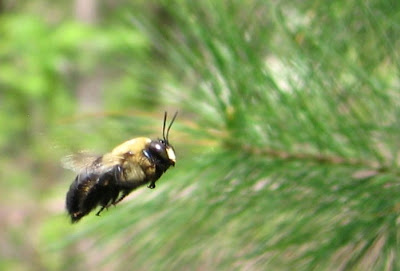After five great days vacationing with family in Texas, we're back home to find deliciously sweet and tender snap peas! The plants struggled a bit in the heat while we were away, but pea pods are a-hanging, and blossoms are abundant. I was looking forward to making some stir-fry meals with the snap peas, but I don't think we'll be able to resist them in their raw form right off of the plant. So good.
How is everything else doing? Some really great, some just okay ... of course, given the return of early heat here in Michigan, the insects are running rampant. You can see their effect on the Brussels, broccoli, kale, and cabbage. The white seen on the leaves and in the mulch below is ordinary white flour -- reportedly, cabbage worms eat the flour, bloat, and die. We'll see if it works.
We have baby fruit on the tomato plants (this particular variety is the yellow pear tomato), and blossoms on nearly every pepper plant.
The heirloom tomato and pepper plants that I started from seed are slow to grow, so I have yet to transplant them into the ground. They will likely end up in pots on the patio. The varieties pictured here are heirlooms from a local farm.
I also picked up some cucumber and broccoli plants from a local farmer, and these plants are THRIVING in the heat. I planted marigolds throughout my veggie beds as they are said to help with nematode and aphid problems.
I love the cucumber plant's curly-cue tendrils -- if you watch for long enough, you can practically see them growing in front of your eyes.
The lettuces in the window boxes are growing strong--they really love their east-facing spot, thankfully. The green shoots emerging from the soil to the left of the lettuce below are Parisian Market Carrots, a chunky, round variety that should grow well in the shallow soil depth of the window box.
And all of my herbs are thriving. I have two kinds of basil, rosemary, and some coleus (mixed in for color) in one pot, and a tall plant stand that holds mint, parsley, and cilantro.
I really dig the plant stand, which is from Crate and Barrel. It allows me to stack these herbs vertically (remember that I have very little patio and yard space). It also lets me easily swap out or move around plants from this stand to adjust for shade/sun.
As my garden grows, I am beginning to think of new dishes to cook using these plants. Tonight I made grilled chicken and yellow squash, and worked in the parsley and cilantro, as well as my many-year-old chives that originally came from my mother. Do you have favorite recipes that feature any or many of the ingredients in my garden? Pass them along, please!
"Shall I not have intelligence with the earth?
Am I not partly leaves and vegetable mould myself?"
--Henry David Thoreau





















.JPG)


